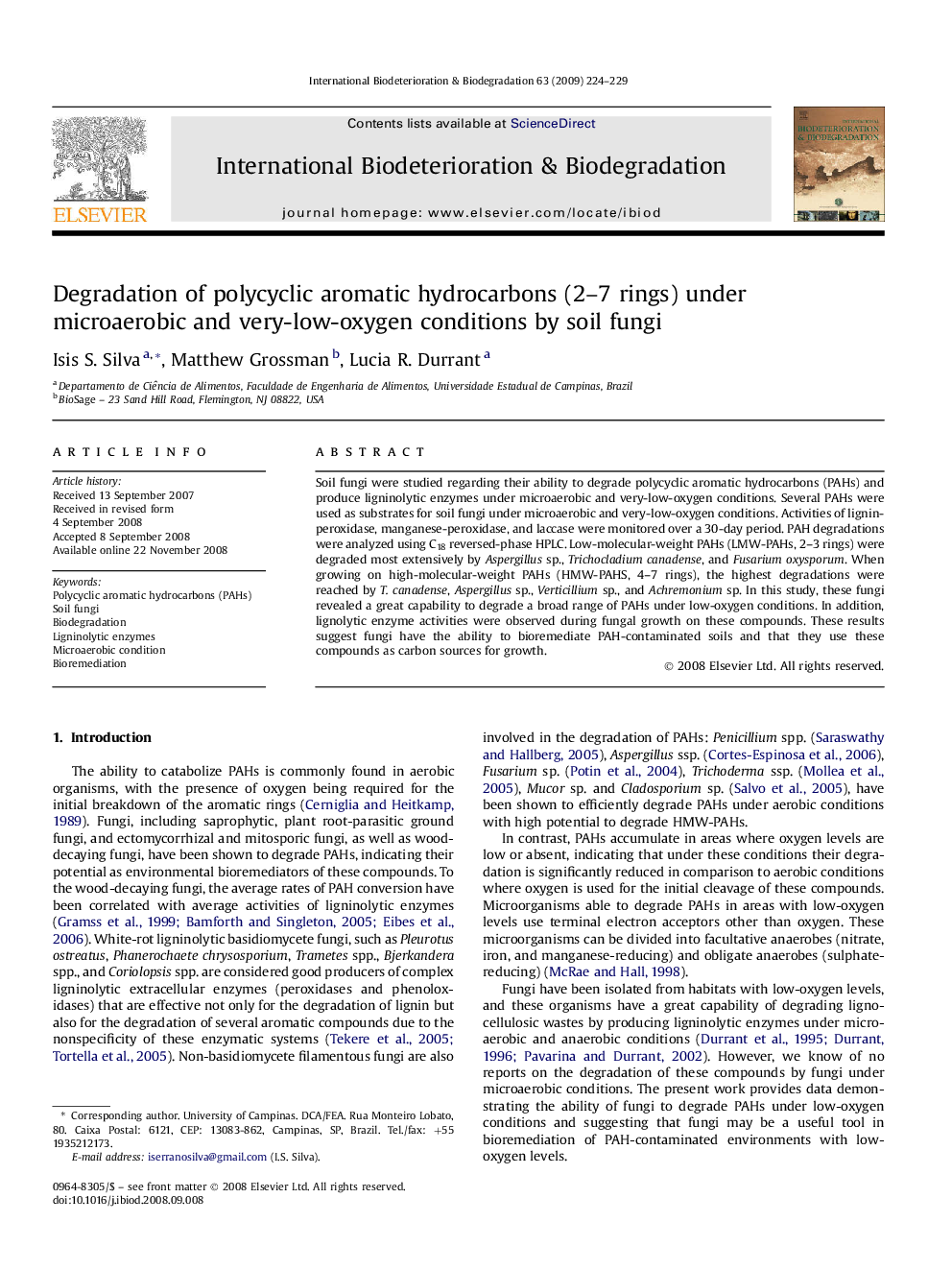| Article ID | Journal | Published Year | Pages | File Type |
|---|---|---|---|---|
| 4365444 | International Biodeterioration & Biodegradation | 2009 | 6 Pages |
Soil fungi were studied regarding their ability to degrade polycyclic aromatic hydrocarbons (PAHs) and produce ligninolytic enzymes under microaerobic and very-low-oxygen conditions. Several PAHs were used as substrates for soil fungi under microaerobic and very-low-oxygen conditions. Activities of lignin-peroxidase, manganese-peroxidase, and laccase were monitored over a 30-day period. PAH degradations were analyzed using C18 reversed-phase HPLC. Low-molecular-weight PAHs (LMW-PAHs, 2–3 rings) were degraded most extensively by Aspergillus sp., Trichocladium canadense, and Fusarium oxysporum. When growing on high-molecular-weight PAHs (HMW-PAHS, 4–7 rings), the highest degradations were reached by T. canadense, Aspergillus sp., Verticillium sp., and Achremonium sp. In this study, these fungi revealed a great capability to degrade a broad range of PAHs under low-oxygen conditions. In addition, lignolytic enzyme activities were observed during fungal growth on these compounds. These results suggest fungi have the ability to bioremediate PAH-contaminated soils and that they use these compounds as carbon sources for growth.
